#1993
Junkyard Find: 1993 Subaru Justy
I don’t use the Miserable Econoboxes tag as much as I should, but I’m using it here fore shore, because you’d be hard-pressed to find a more genuinely punitive commuter appliance than the wretched Subaru Justy (the two-wheel-drive version, that is; the four-wheel-drive Justy, particularly when dressed in a weird early-90s paint color, is a lot of fun for mud/snow hoonage). As incredibly cheap, disposable subcompacts, just about all the 2WD Justys (Justies?) got scrapped at least a decade ago, so I don’t see many in wrecking yards now. Here’s one!
Junkyard Find: 1993 Ford Probe
I’ve noticed that you don’t see many Grateful Dead stickers on stereotypical hippie-type vehicles in junkyards. No, you see such stickers all over stuff like big ol’ GMC pickups (though I did find this thoroughly Steal Your Face-ized Vanagon a couple years back). Last week, while looking for a suitable speedometer for the Kustom Korona, I spotted this Deadheaded-up Ford Probe, complete with this intensely Coloradic dab-themed SYF image that you wouldn’t want to take across the state line into Nebraska or Kansas.
Junkyard Find: 1993 Ford Taurus SHO
While the Ford Taurus has been the most numerous vehicle in American self-service wrecking yards for at least 15 years, most of the time they are the background against which the more interesting cars stand out. Only the SHO version seems worthy of inclusion in this series, and until today we’ve seen just just this ’96 Taurus SHO with V8. These cars have been very affordable for quite some time, but there remains enough of an enthusiast base to keep most of the survivors on the road. Here’s one that I spotted in the San Francisco Bay Area back in August.
Junkyard Find: 1993 Ford Festiva L
The Ford Festiva aka Kia Pride aka Mazda 121 spent much of the last decade being a fairly common sight in American self-serve wrecking yards, but lately I’ve been seeing many fewer examples of this little gas-sipper. You can buy this car new in Iran, where it is badged as the Saipa 132, and some outlaw factory is probably still building the things in China. We’ve seen this ’90 Festiva in this series, and now I’ve found a decal-enhanced example of the final model year of the US-market Festiva (the next generation Pride was called the Aspire in the United States) in a Denver yard.
Junkyard Find: 1993 Eagle Summit Wagon
As with so many things surrounding the bewildering swirl of Renault/AMC- and Mitsubishi-derived products sold by Chrysler brands during the late 1980s and early 1990s, the Eagle Summit wagon is something of a puzzler. The Eagle Summit car was a rebadged Mitsubishi Mirage, which itself was the same car as a Dodge/Plymouth Colt. But the Summit wagon was actually a Mitsubishi RVR, sold in the United States as the Mitsubishi Expo LRV and the Dodge/Plymouth Colt Wagon. In Europe, this thing was known as the Space Runner. Space Runner!
Junkyard Find: 1993 Honda Del Sol
As the owner of a much-loved 1992 Honda Civic (unfortunately, I’m not the only one who loves fifth-gen Civic hatchbacks), I know how hard it is to find parts for my V8-hauling hooptie at my local self-serve wrecking yard. The 1992-95 Civic has become to the 2010s what the ’57 Chevy was in the 1970s: the affordable car with great performance potential that all the 24-year-olds want. That means that these cars get picked clean within minutes of showing up at a low-price/high-inventory-turnover wrecking yard. The two-seat Del Sol version of the Civic is even harder to find in such yards; in fact, this is perhaps the third Del Sol I’ve seen in my last five years of junkyard crawling.
Junkyard Find: 1993 Dodge Shadow ES
We often forget about the P-body version of Chrysler’s mainstay-for-15-years K platform, though Shadows and Sundances once roamed North American highways in huge numbers. I still see plenty of completely trashed Ps in self-service wrecking yards— for example, this ’91 Shadow, this ’92 Sundance, and this super-rare Sundance America— but it takes something special to make me willing to do a Junkyard Find on a P. Early-90s factory tape graphics on a crypto-sporty Shadow sold just before the advent of the Neon? Yes, there’s some historical significance here.
Junkyard Find: 1993 Hyundai Excel
The first-gen Hyundai Excel was sold in the United States for the 1986 through 1989 model years, and it was a supremely bad automobile. So bad, in fact, that most of them were used up and crushed by the middle of the 1990s. Because of their rarity today, I always photograph early Excels when I see them (including this ’86, this ’87, and this ’88). Hyundai did a fairly extensive cosmetic facelift for the 1990 Excel, and this generation was sold though the 1994 model year. The second-gen version was much more reliable than the first— it would have been hard not to improve upon the fantastically crappy 1986-89 Excels— but by that time just about everybody knew to stay away from the model. That makes these cars even harder to find than the initially-hot-selling first-gen Excels. Here’s a ’93 that I spotted at a self-service yard in Denver.
Junkyard Find: 1993 Mercury Capri
After the Miata (introduced in the United States as a 1990 model) turned out to be an instant hit for Mazda, the marketing wizards at Ford decided to put Mercury badges on the Australian Ford Capri, a four-seat sporty convertible, and beat Mazda at its own game. Sure, the ’91-94 Capri was a Mazda under the skin (it was based on the 323), and it had front-wheel-drive, but so what?
Junkyard Find: 1993 Subaru SVX
The Subaru SVX, as I explained in the text of the previous SVX Junkyard Find, is one of those cars with a real-world price tag far, far lower than Internet Car Experts would have you believe. So low, in fact, that it is not at all difficult to find Subaru’s amazing last-gasp-of-80s-silliness car in wrecking yards. Here’s a ’96 I found in Denver a few weeks back.
Junkyard Find: 1991 and 1993 Chrysler LeBaron Convertibles
One of the worst things about the Malaise Era (other than the ascendance of Captain and Tennile) was the lack of cars with convertible tops during the period. The last convertible Cadillac Eldorado rolled off the assembly line in 1976, but the decline of the convertible had started a few years earlier. The top-down drought held until the last of the Malaise years, when machines such as Rabbit Cabriolets and LeBaron convertibles became available. Chrysler kept making the K-based LeBaron convertible until 1995, but you don’t see many of them these days. Here’s a pair of early-90s examples I found side-by-side in a Denver wrecking yard.
Junkyard Find: 1993 Acura Vigor
Remember the Vigor? Probably not. Nobody remembers the Vigor. This car dates from about the time that Honda really got serious about its decline from former untouchable greatness, which may or may not have had something to do with the death of founder Soichiro Honda in 1991.
Junkyard Find: NO, IT'S NOT A HEMI!
The good old Chrysler 318 engine has been around since, oh, around the start of the Iron Age. From about 1,000 BC to 2002 AD, the 318 and its LA engine relatives were installed in Chrysler products, and they did a fine job. If it hadn’t been for the cockroach-grade immortality of the Chrysler Slant Six, in fact, we’d probably be talking about the 318 as the most unkillable engine Detroit ever made. In 1992, Chrysler updated the 318 (which had gone to a roller cam a few years before) with high-pressure multi-point fuel injection and more emission-friendly heads… and they called it the 5.2 Magnum, no doubt because the original Dodge Magnum hadn’t been good enough to justify such a cool name. As I discovered in a Denver wrecking yard last week, at least one Dakota owner was proud enough of his Magnum to apply a full-body vinyl wrap to his truck.
Junkyard Find: 1993 Pontiac Bonneville SSEi
Yesterday’s Junkyard Find from 1993 wasn’t the kind of car most of us would find interesting enough to seek out today (though I’m considering buying a Dynasty, caging it, and starting a new race series: Spec Dynasty). Today’s ’93 car is a different story. A Bonneville with 205 supercharged horses under the hood? I’ll take one!
Junkyard Find: 1993 Dodge Dynasty
The TV show Dynasty was long gone by 1993, but Chrysler kept the glamorous Dynasty name on their C-Body cars (the 114th variation of the K platform) until 1993. The Dynasty is one of those cars Chrysler wishes we’d all forget (right down there with the Diplomat-based LeBaron), and thus it seems historically significant when I find an example in the junkyard.




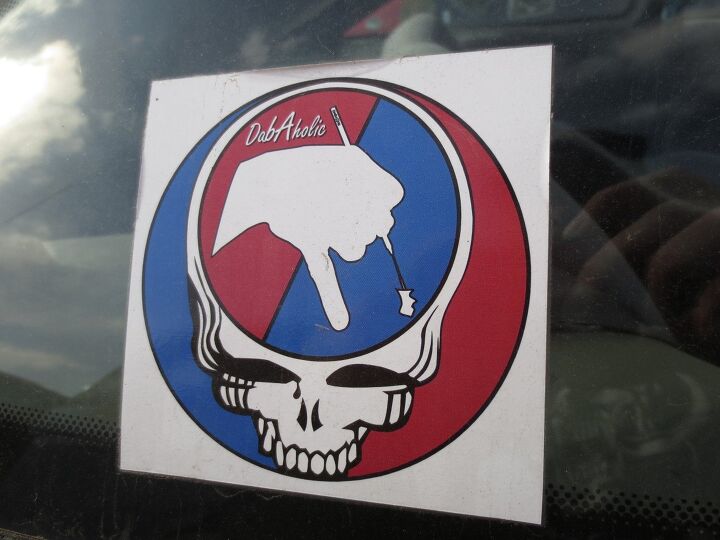

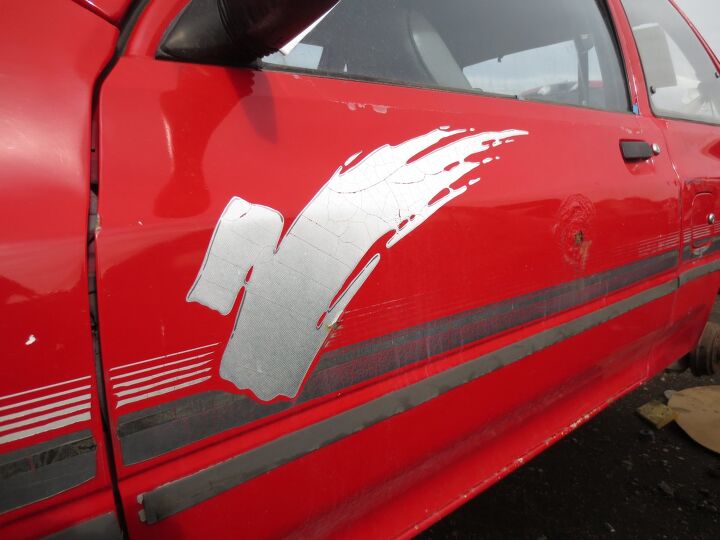
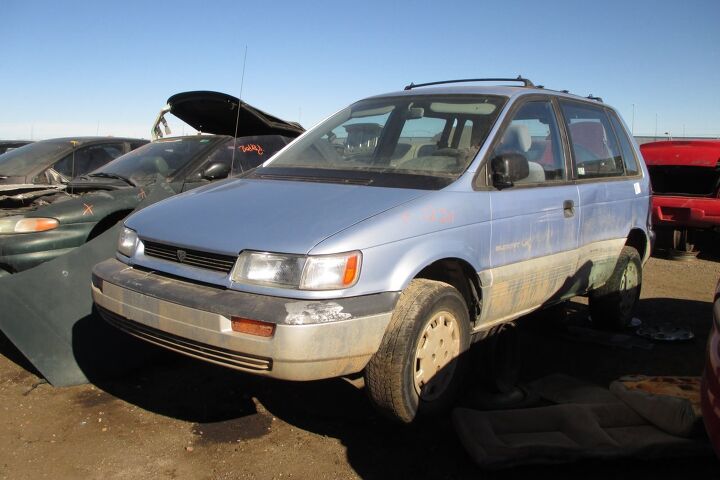



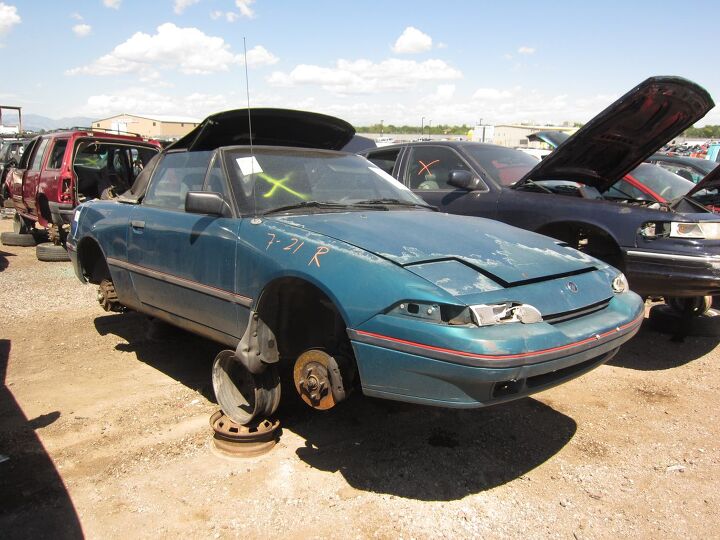




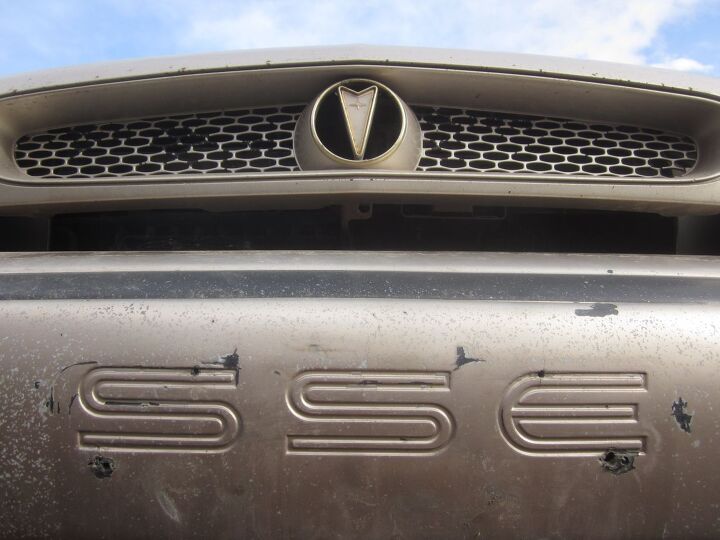
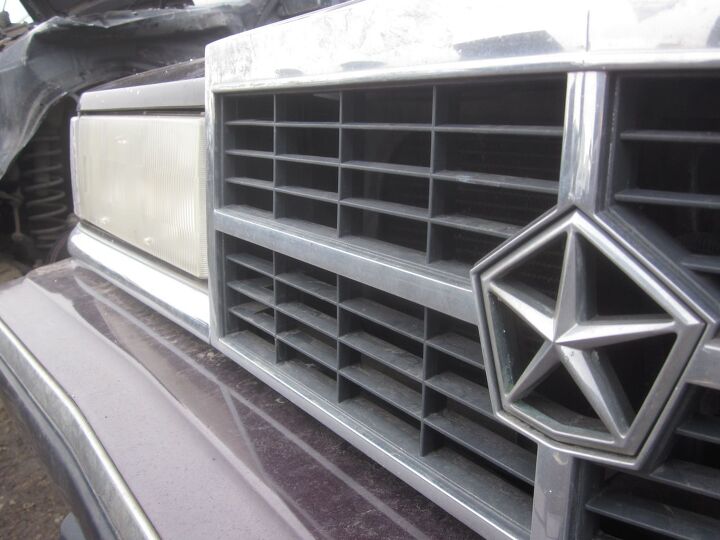












Recent Comments